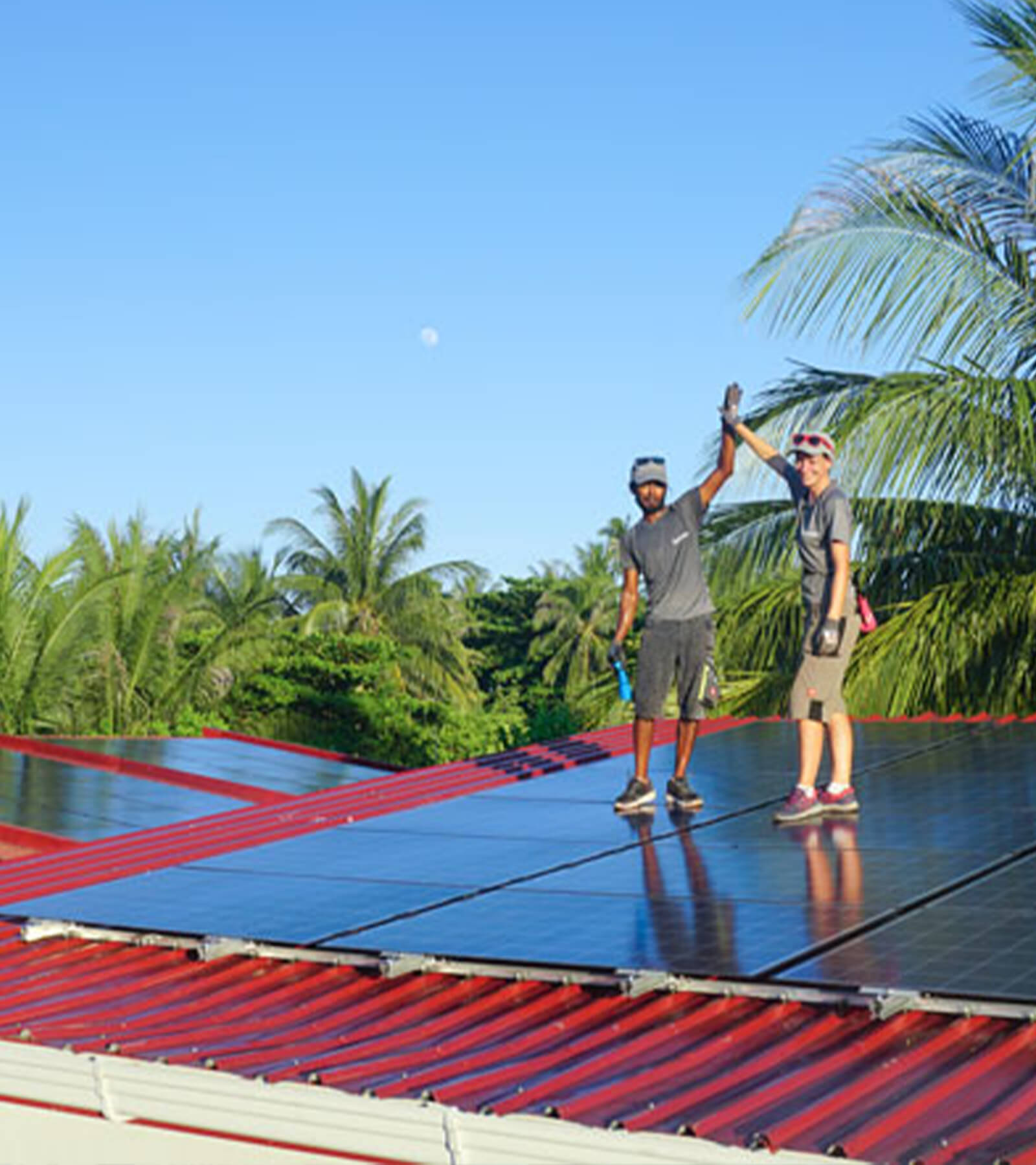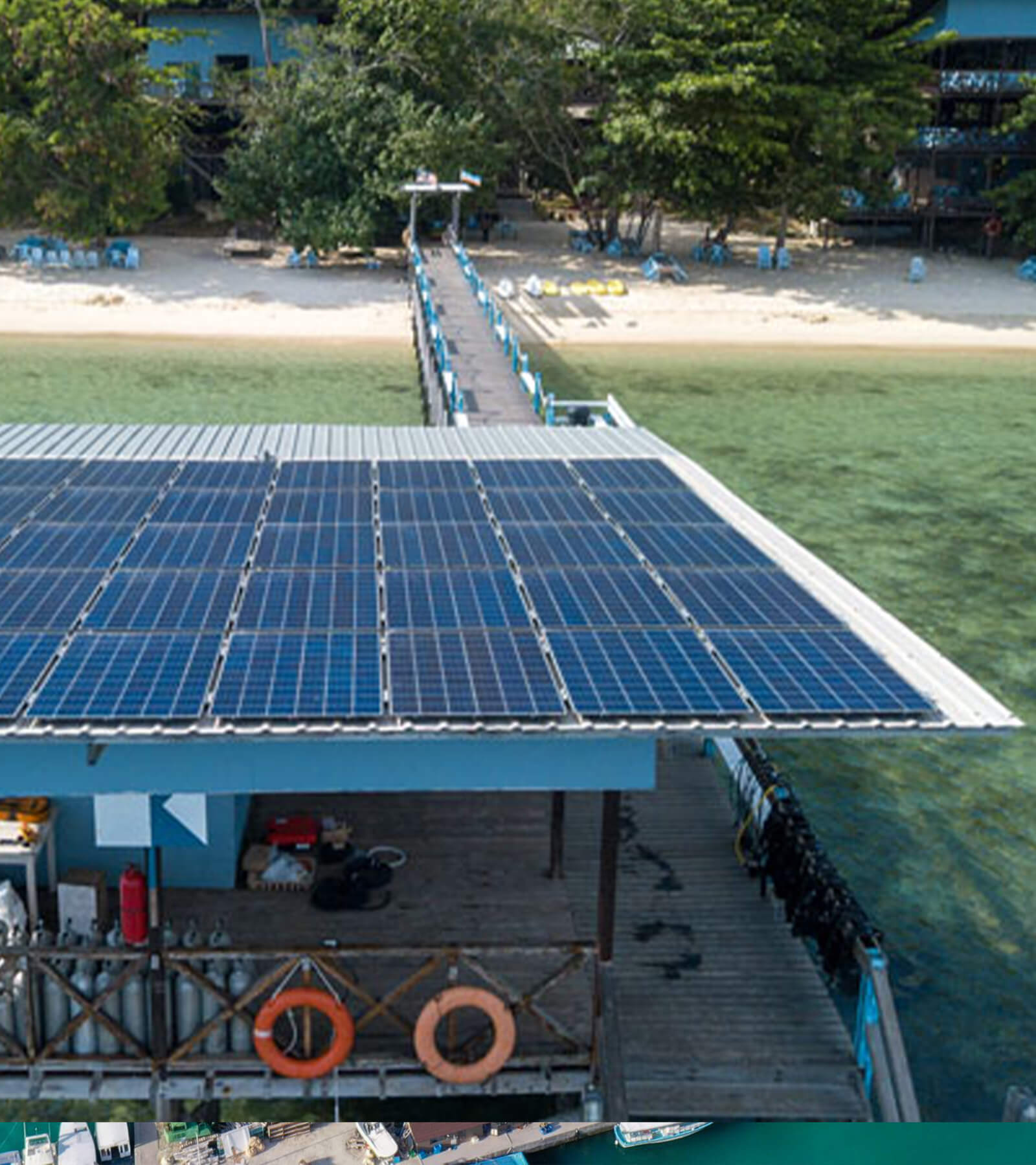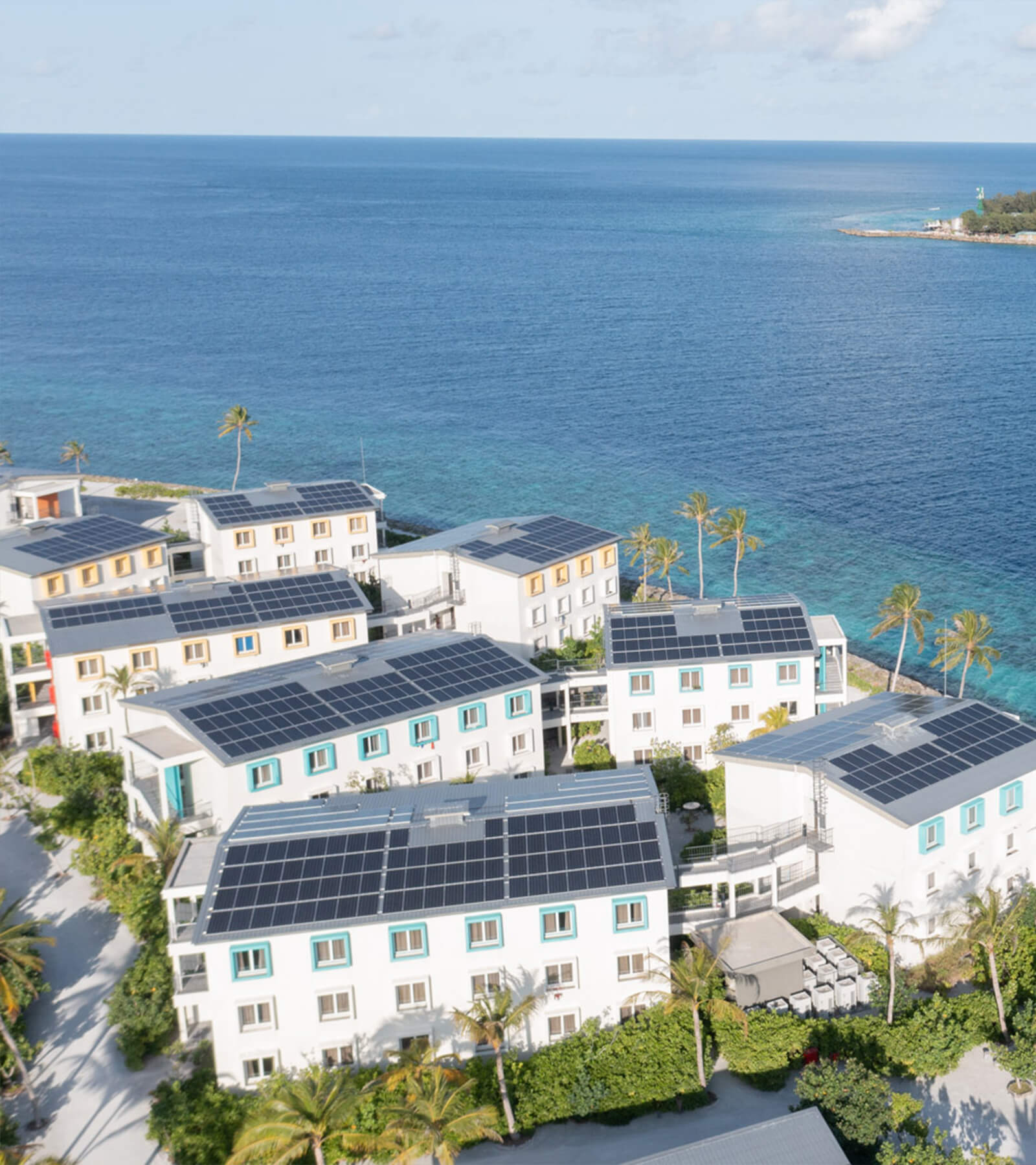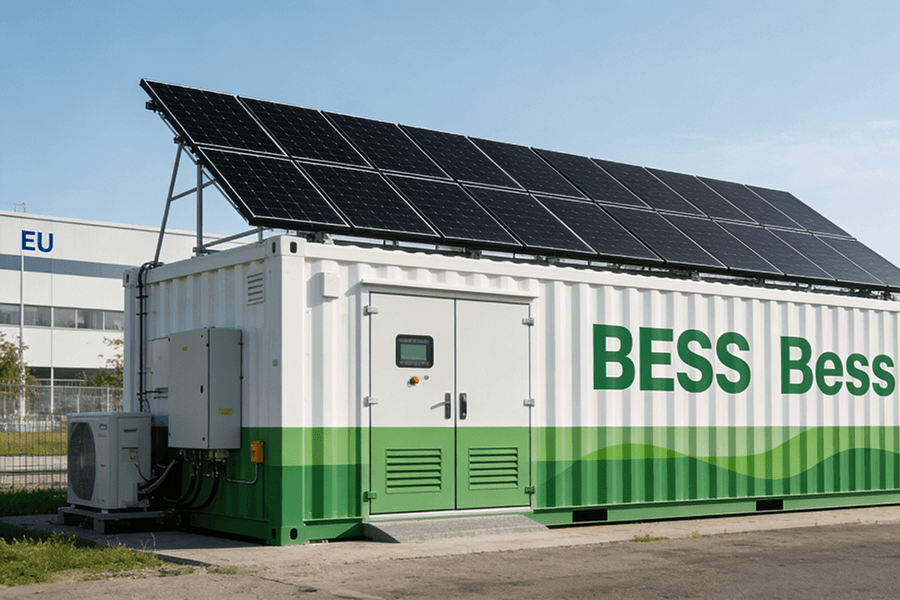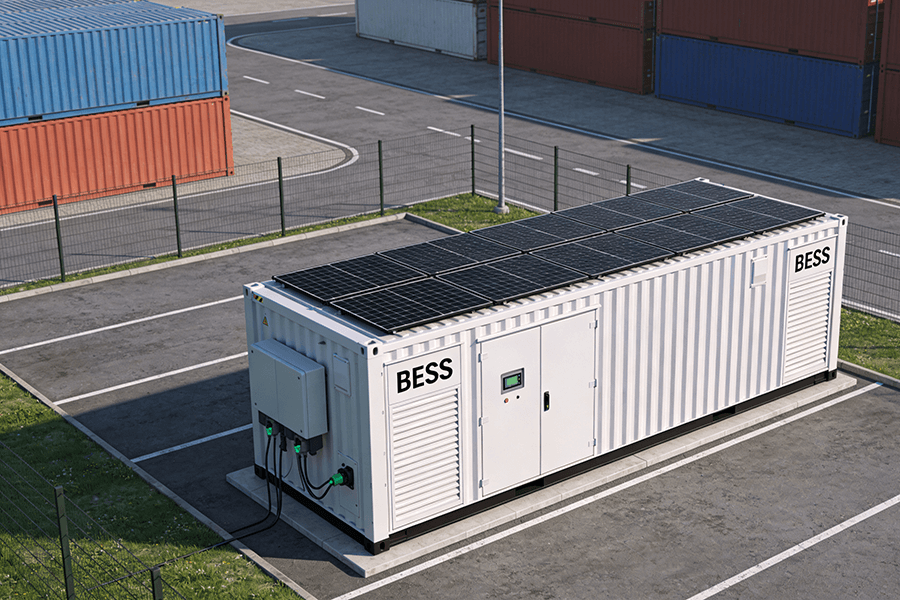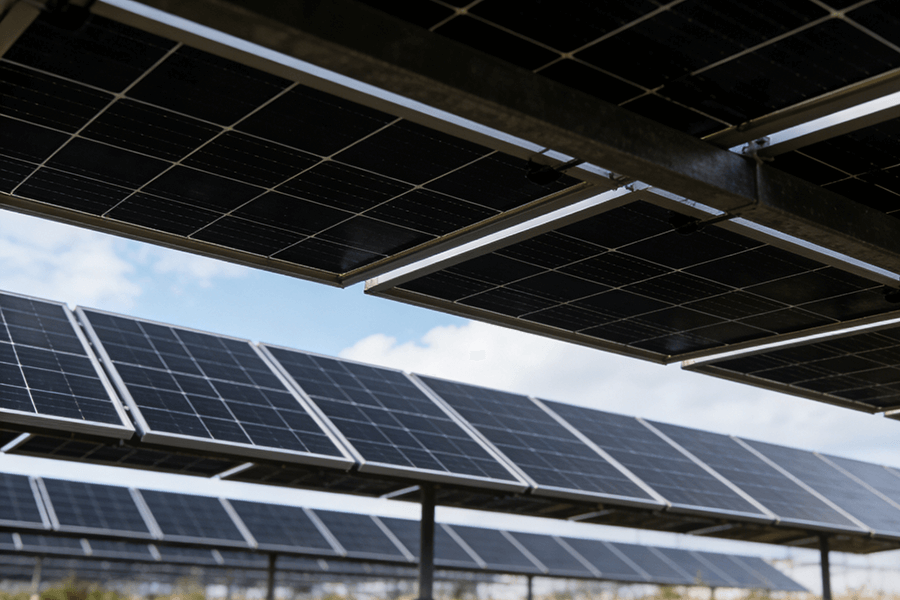Tired of diesel generators roaring like grumpy badgers at your festival or belching smoke on your remote construction site? Enter the Mobile BESS Container – the rapidly growing hero of temporary power. This isn’t your average battery box; it’s a rugged, rapidly deployable powerhouse on wheels (or skids). We explore its killer apps: silently dethroning diesel at events like Glastonbury, powering off-grid builds 24/7, acting as a first-responder electron source in disasters, and serving as the utility’s grid Band-Aid. Dive into the essential design smarts: military-grade toughness, plug-and-play speed, and the crucial grid-forming magic that lets it conduct the power orchestra flawlessly. Discover why 2025 is the year these mobile power ninjas are changing the game, one quiet kilowatt at a time. Spoiler: The era of the roaring dinosaur fuel burner is ending.
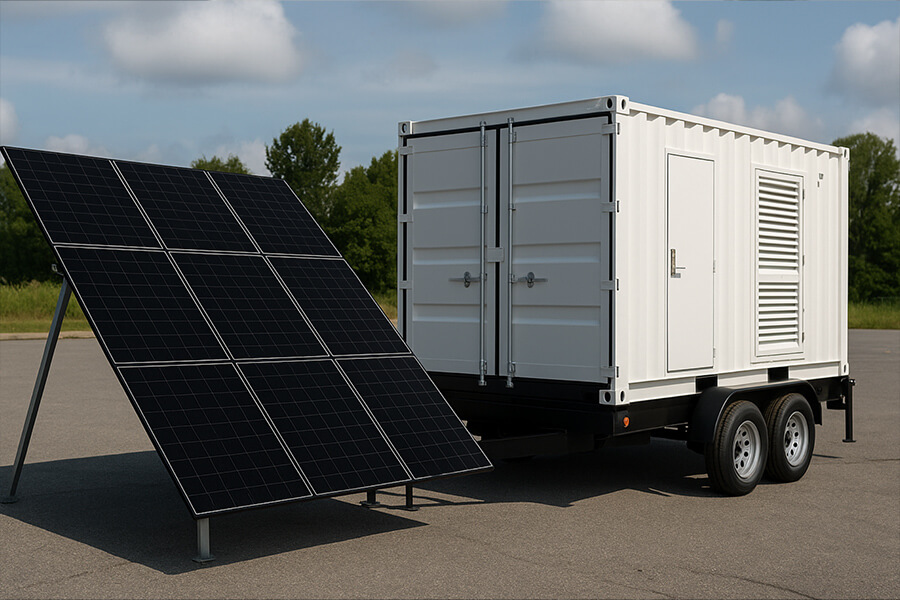
The “Where’s the Outlet?!” Panic – Solved (Quietly, Efficiently)
Picture this: A festival headliner’s guitar solo hits peak awesomeness… and the stage goes dark. Cue the deafening boos, the event manager sweating through their headset, and the backup diesel generator coughing to life like a grumpy badger choking on exhaust fumes. Not exactly the vibe anyone paid for. Enter the unsung hero rolling onto the scene (literally): the Mobile BESS Container. Think of it as your phone’s power bank, but after a serious gym session – capable of juicing entire carnivals, construction sites, or emergency shelters. And 2025? This is the year these silent powerhouses are stepping out of the niche shadows and into the spotlight (efficiently, and without the smoke show).
Why the Sudden Buzz? From Niche to Main(ish)-Stream
Forget whispers; the mobile BESS market is now having a full-volume conversation. What was once a clever solution for the most forward-thinking is rapidly becoming the pragmatic choice for anyone needing temporary, clean power. Three heavyweight trends are driving this surge:
-
Battery Prices: The Race to the Bottom (Finally!): The cost plunge for lithium-ion batteries, the heart of any BESS, has been nothing short of dramatic. According to BloombergNEF’s 2024 Battery Price Survey, volume-weighted average pack prices fell another 14% year-over-year in 2024, landing around 115/kWh∗∗.Thisrelentlessdeclinemakeslarge−scalemobilestorageprojectsfinanciallyviablelikeneverbefore.Thetrajectorypointsfirmlytowards∗∗sub−100/kWh by late 2025, crossing a crucial psychological and economic threshold.
BNEF Battery Price Decline (Volume-Weighted Average, Pack Level)
| Year | Price ($/kWh) | YoY Decline |
|---|---|---|
| 2023 | ~$133 | 14% |
| 2024 | ~$115 | 14% |
| 2025 (Projected) | <$100 | >13% |
-
Regulations: The Squeeze on Diesel Gets Real: Governments are done politely asking for cleaner air. Stringent emissions regulations, particularly targeting particulate matter (PM) and nitrogen oxides (NOx), are making diesel generators increasingly expensive and operationally cumbersome, especially in urban areas and sensitive environments:
- European Union: The Stage V standards for non-road mobile machinery (which covers many generators) are fully enforced, mandating drastic cuts in PM and NOx. Non-compliance means fines or operational bans. EU Stage V Info
- California (CARB): Leading the US charge, CARB’s regulations on portable generators and off-road equipment are among the strictest globally. Compliance costs and the push towards zero-emission zones (like those for ports or large events) are major diesel disincentives. CARB Off-Road Regulations
- Event & Construction Site Bans: Major cities and event organizers are increasingly mandating low-noise, zero-emission power solutions – diesel need not apply.
-
Grid Instability: The Unreliable Backbone: Whether it’s due to aging infrastructure, extreme weather events intensified by climate change, or simply peak demand overloads, grid reliability isn’t a given. This volatility creates a massive need for rapidly deployable, resilient backup and support. Mobile BESS units act as agile “grid Band-Aids” or independent microgrid anchors when the main network falters. The US experienced an estimated $150 billion in economic losses from power outages in 2024 alone [Source: DOE Grid Reliability Reports]. Mobile BESS is a key mitigation tool.
The result? The mobile BESS container is no longer just a “nice-to-have” for the eco-conscious. In 2025, it’s a financially sound, regulation-compliant, reliability-boosting powerhouse solution. Diesel’s days as the undisputed king of temporary power are officially numbered. The quiet revolution is rolling in, and it’s surprisingly powerful. Next up: Where exactly are these mobile power ninjas making the biggest impact?
The “Why Lug a Battery Around?” – Killer Apps (Not the Software Kind)
So, you’ve got this rugged box full of silent power potential. Why bother moving it? Because the magic happens where the power is desperately needed, often far from a reliable grid plug. Mobile BESS containers aren’t just batteries; they’re problem solvers on wheels (or skids). Let’s dive into the scenarios where they’re absolutely crushing it in 2025:
1. Festivals & Events: Silence the Smoke Monster (and the Roar)
Diesel gensets blaring next to the main stage? So 2023. Mobile BESS units are the new backstage VIPs, swapping noise pollution and acrid fumes for… well, blissful, hum-free Beyoncé (or whoever’s headlining). The benefits are crystal clear:
- Zero Emissions: No more coughing through sets or violating strict urban air quality rules. Pure, clean power.
- Near-Silent Operation: Let the music be the only sound. Ambient noise levels plummet, enhancing the attendee experience significantly.
- Operational Efficiency: Eliminate constant fuel deliveries (goodbye, traffic jams and spill risks!) and reduce on-site generator maintenance hassles.
- Real-World Rockstar: The iconic Glastonbury Festival 2024 piloted a large-scale mobile BESS solution provided by Aggreko, integrating it with existing generators to form a hybrid system. The goal? Slash diesel use by ~30% and drastically cut noise and emissions around sensitive areas. Early reports hailed it a success, paving the way for wider adoption across the 2025 festival circuit. Aggreko Glastonbury Case Study
Festival Power: Diesel vs. Mobile BESS
| Feature | Diesel Generator (Typical 1MW) | Mobile BESS (Typical 1MW/2MWh) |
|---|---|---|
| Noise Level | 85-100+ dB(A) (Jet Engine at 100ft) | < 65 dB(A) (Normal Conversation) |
| Local Emissions | High (NOx, PM, CO2) | Zero (At Point of Use) |
| Fuel Logistics | Constant Refueling Needed | None (After Initial Charge) |
| Refueling Cost | 1000+ per day (Fuel + Labor) | $0 (After Initial Charge) |
| Vibe | Industrial Grumble & Fumes | Peaceful, Clean Energy Bliss |
2. Construction Sites: Powering Progress, Not Pollution
Remote site? Sketchy grid connection? Traditionally, this meant diesel generators running 24/7 – a massive drain on budgets (cha-ching $$$) and the environment (cough-cough emissions). Enter the Mobile BESS. Drop one onsite. Pair it with solar panels during the day to “charge the beast.” Need reliable power overnight for security lights, tool charging, or critical concrete curing? The BESS delivers – silently and efficiently, without needing a diesel babysitter running at low, inefficient loads. It’s the ultimate silent, hyper-efficient workhorse. The numbers speak volumes:
- Fuel Savings: Hybrid systems (Solar + BESS + backup diesel) routinely cut diesel fuel consumption by 40-70% on suitable sites. For a large site burning 5,000/weekindiesel,savingsquicklyhit∗∗100,000+ annually**. [Source: Construction Industry Training Board (CITB) – Energy Efficiency on Site Report 2024]
- Emissions Compliance: Crucial for meeting stringent site environmental permits, especially in regulated regions like the EU and California.
- Reduced O&M: Less generator runtime means lower maintenance costs and extended engine life.
3. Disaster Relief: First Responder (Electron Edition)
When Mother Nature throws a Category 5 tantrum, restoring power isn’t just convenient; it’s critical for saving lives. Mobile BESS units are proving indispensable as electron first-responders. They can be airlifted, driven, or even barged into devastated areas far faster than repairing poles and wires or setting up complex permanent microgrids. They provide immediate, clean power for:
- Emergency shelters (lighting, climate control)
- Communication hubs (satellite links, charging)
- Medical tents and field hospitals
- Water purification systems
Real-World Heroes: Following the devastating Hurricane Milton in late 2024, FEMA and the US Army Corps of Engineers (USACE) rapidly deployed dozens of mobile BESS units across Florida and the Southeast. These units provided immediate, stable power for critical response operations where the grid was obliterated, often within 24-48 hours of landfall, significantly accelerating recovery efforts. FEMA: Power Restoration Innovations 2024 | USACE: TEMF Projects
4. Temporary Grid Support: The Utility’s Agile Pit Crew
Is the grid feeling flabby during a scorching summer peak? Did a critical transformer decide to retire unexpectedly? Utilities are increasingly turning to Mobile BESS as their rapid-response “grid Band-Aids.” Park one (or several) strategically within hours or days:
- Peak Shaving: Inject power during high-demand periods to prevent overloads and costly blackouts.
- Voltage Support: Stabilize wobbly voltage on weak distribution lines.
- Defer Upgrades: Buy valuable time (months or even years) for planning and executing costly substation or line upgrades.
- Black Start Support: Help restart power plants or sections of the grid after a major outage.
The payoff is substantial. A strategically placed 4-hour duration Mobile BESS can defer a 2 million substation upgrade for 3-5 years, representing massive capital cost avoidance. California ISO (CAISO) reported utilizing mobile storage for localized reliability over **150 times** during the challenging summer of 2024. [CAISO Summer 2024 Operations Report, Page 23](https://www.caiso.com/Documents/Summer-2024-Operations-Report.pdf) S&P Global Commodity Insights notes the mobile BESS market for transmission deferral alone could reach **500 million annually by 2026**. S&P Global: Mobile Storage for Grid Deferral
The verdict? Mobile BESS containers aren’t a solution looking for a problem. They’re the pragmatic, powerful, and increasingly economical answer to some of the most persistent and expensive power challenges across multiple industries. The question is shifting from “Why?” to “Where do we deploy them next?” But how do you build a battery tough enough for this nomadic life? That’s where the engineering smarts come in…
Designing a Road Warrior: Not Your Average Battery Box
So, we know why mobile BESS containers are becoming indispensable across industries. But how do you engineer a massive battery to survive the rigors of a festival mud pit, a dusty construction site, a hurricane-ravaged zone, or being constantly hauled down highways? This isn’t your sleek laptop battery. Building a true “road warrior” demands specific, hardened design philosophies.
1. Robustness: Built Like a Tank (Because Construction Sites & Festivals Happen)
Forget delicate components. Mobile BESS containers live a tough life. They need to withstand:
- Physical Abuse: Forklifts, dropped tools, accidental bumps during transport, or even the occasional overly enthusiastic festival attendee. Think military-grade shock and vibration resistance, often tested to standards like MIL-STD-810H.
- Environmental Assault: Torrential rain, desert dust, freezing temperatures, and scorching heat. Sealing is critical – IP55 rating is often the bare minimum, with IP65 (dust-tight and protected against water jets) becoming the preferred standard for true resilience. Enclosures are typically heavy-duty, corrosion-resistant steel.
- Fire Safety: Multiple layers of protection are non-negotiable. This includes advanced battery management systems (BMS) for cell monitoring, passive fire suppression systems (like aerosol or gas-based), robust thermal runaway containment within modules, and external fire ratings for the enclosure itself. Standards like UL 9540A and NFPA 855 are paramount. NFPA 855 Info
Mobile BESS Durability Standards: The Toughness Checklist
| Threat | Design Feature | Key Standard/Test | Why It Matters |
|---|---|---|---|
| Shock & Vibration | Reinforced internal framing, dampers | MIL-STD-810H (Transport) | Prevents internal damage during rough road transport |
| Weather Ingress | Sealed cable glands, IP-rated enclosures | IP65 (Minimum recommended) | Keeps dust, rain, hose water out; ensures reliability |
| Impact | Reinforced corners, heavy-duty steel skins | Site-specific drop tests (e.g., Aggreko) | Survives common on-site accidents like tool drops |
| Extreme Temps | Active thermal management system | Operational range: -30°C to +50°C | Functions reliably in Arctic cold or desert heat |
| Fire | Multi-layer BMS, suppression, containment | UL 9540A, NFPA 855 | Mitigates risk; crucial for permitting & public safety |
2. Rapid Deployment: The “Plug-and-Play(ish)” Dream
When the lights are out or the festival gates are opening, speed is everything. Mobile BESS shines through rapid deployment architecture:
- Standardized Form Factor: Most units are built on standard 20ft or 40ft ISO shipping container frames. This allows transport using common global logistics (trucks, ships, rail) and handling with standard port cranes or roll-off trucks.
- Integrated Power Conversion: Units come with pre-installed, integrated inverters and transformers, eliminating the need for complex field assembly of power electronics.
- Pre-Configured Cabling: Utilizing standardized, high-amperage connectors (like Camlock or Powerlock), and often featuring external, easily accessible connection panels. Twist-lock mechanisms secure the container itself during transport and operation.
- Goal: Truck rolls in, crane drops it, connect pre-made cables, power ON – often within 4-8 hours. Compare this to days or weeks for installing traditional fixed infrastructure or setting up complex multi-generator paralleling systems. The Tennessee Valley Authority (TVA) reported deploying mobile BESS units for emergency support in under 6 hours during a 2024 winter storm, significantly faster than traditional solutions. TVA Grid Resilience Report 2024
3. Grid-Forming Capability: The Digital Maestro
This is where advanced Mobile BESS units truly separate themselves from simple backup batteries or older inverter tech. Grid-forming inverters are the magic sauce:
- Black Start Capability: They can literally start a grid from complete darkness (a “black start”), acting as the initial voltage and frequency source without relying on an external grid or large rotating generators.
- Microgrid Orchestration: They can create and maintain a stable, independent “island” grid (a microgrid), seamlessly integrating solar, wind, and even existing diesel generators. They dictate the voltage and frequency, acting like the digital orchestra conductor.
- Seamless Synchronization: They can instantly sync up with a wobbly or unstable main grid or other generators, providing crucial stability instead of tripping offline.
- Essential For: Powering sensitive equipment (event stages, hospitals, data centers), enabling high renewable penetration in off-grid/hybrid sites, and providing robust support during grid restoration. California utilities now mandate grid-forming capabilities for new utility-scale storage projects, a trend rapidly extending to mobile units for critical applications. CAISO: Grid-Forming Inverter Requirements
The “Other Stuff” – Critical Enablers:
- Thermal Management (Battery’s Nemesis): Lithium-ion batteries hate extreme heat. Sophisticated active liquid cooling systems are now standard in high-performance mobile BESS, maintaining optimal cell temperature (typically 20-30°C) for performance, safety, and longevity. Poor thermal management can reduce lifespan by over 50% and increase fire risk. [Source: DNV GL Battery Performance Scorecard 2024]
- Safety Systems (Layered Defense): Beyond fire suppression, this includes comprehensive gas detection (for off-gassing events), smoke detection, emergency stop buttons, arc flash detection, and remote emergency shutdown capabilities. Multiple, redundant layers are essential.
- Remote Monitoring & Diagnostics: Operators need real-time visibility. Modern units offer cloud-based monitoring of state-of-charge (SOC), state-of-health (SOH), temperature profiles, power flows, and fault alerts. This allows proactive maintenance and maximizes uptime.
- Energy Density (The Shrinking Giant): Advancements in battery chemistry (like LFP dominance for safety) and pack design are constantly improving kWh per square foot. Higher density means more power in the same footprint, increasing deployment flexibility. Average energy density for mobile BESS packs has increased by ~15% since 2023, reaching approximately 180-220 Wh/L. [Source: BloombergNEF Energy Storage System Tracker 2025H1]
Building a mobile BESS isn’t just about stuffing batteries into a box. It’s about creating a ruggedized, rapidly deployable, intelligent power asset that can withstand the real world and deliver grid-quality electricity wherever it’s dropped. This engineering prowess is what turns the “power bank on steroids” concept into a reliable, indispensable tool powering the quiet revolution.
Why Maxbo Solar is Your Mobile BESS Wingman (Hi, It’s Us!)
Okay, full disclosure time: We live for this stuff at Maxbo Solar. While solar panels will always be our first love, the energy storage revolution – especially the fast-moving, ultra-versatile mobile kind – gets us seriously excited. Why? Because we see the headaches our customers face daily: diesel dependency, grid anxiety, emissions fines, and the sheer logistical nightmare of powering the unpredictable. That’s where Maxbo Mobile Power Solutions come in – engineered not just to meet the moment, but to redefine what temporary power can be.
Our Take on Mobile Power: Engineered for Reality, Not Just the Brochure
We don’t just bolt batteries onto trailers and call it a day. We engineer purpose-built solutions for the real-world chaos you operate in:
-
Deployment Speed is King (Seriously, Every Minute Counts): We know downtime is lost revenue or delayed relief. Maxbo units are designed for your crew to set up fast. Think:
- Intuitive, Standardized Connections: Heavy-duty, color-coded Camlock/Powerlock ports and pre-terminated cables minimize confusion onsite.
- Integrated Plug-and-Play Architecture: Transformers, inverters, switchgear – it’s all pre-wired and tested before it ships. Less fiddling, more powering.
- Robust Simplicity: Focused design reduces failure points, speeding up commissioning.
- Target: Power flowing within 4-6 hours of arrival on site for standard deployments. We helped a major telecom provider restore critical tower power post-hurricane in under 5 hours using this approach.
Maxbo Mobile BESS: Deployment Efficiency
| Phase | Industry Average | Maxbo Design Focus | Result for You |
|---|---|---|---|
| Site Prep & Placement | 2-4 hours | Optimized for standard handling | Faster crane/roll-off operation |
| Cabling & Connections | 3-6+ hours (Complex) | Pre-configured, intuitive ports | < 2 hours for primary circuits |
| Commissioning & Sync | 2-4 hours (Variable) | Pre-tested, simplified controls | < 2 hours to stable power output |
| Total Time to Power | 8-14+ hours | Target: 4-6 hours | Minimized disruption, faster ROI |
-
Built Tough, Managed Smart (Peace of Mind Included): These aren’t garage projects. Expect:
- Military-Inspired Durability: IP65-rated enclosures, MIL-STD-810H vibration/shock resistance, and reinforced structures built to survive demanding sites. Your unit laughs at dust storms and torrential rain.
- Cloud-Based Command Center: Our Maxbo PowerView™ remote monitoring platform gives you real-time visibility anywhere. Monitor State of Charge (SOC), State of Health (SOH), power flows, temperatures, and receive proactive alerts. Essential for managing remote assets or critical disaster response ops. Know your system’s vitals without leaving HQ. Global remote monitoring adoption for industrial BESS exceeds 92% in 2025 – BloombergNEF.
-
Grid-Forming as Standard (The Heartbeat of True Independence): We believe mobile power shouldn’t mean compromised quality. Every Maxbo Mobile BESS features advanced grid-forming inverters as standard. This means:
- Creating stable, clean “island” grids from nothing (black start).
- Seamlessly syncing with unstable grids or existing diesel/solar hybrids.
- Providing perfect voltage and frequency control for sensitive loads (medical equipment, event tech, servers).
- It’s not just backup; it’s intelligent, resilient power generation. This capability is now mandated by leading utilities for reliability – we build it in upfront. CAISO Grid-Forming Mandate
-
Hybrid-Ready by Design (The Ultimate Team Player): Got solar? Wind? Existing diesel gensets? Our BESS is engineered to play nice with everyone.
- Seamlessly integrates renewables to maximize clean energy use and slash fuel costs.
- Optimizes diesel generator runtime, forcing them to operate only at peak efficiency, reducing fuel burn by 40-60% and cutting emissions drastically. Source: Diesel Technology Forum Hybrid System Efficiency Study 2024
- Simplifies system control through a unified interface.
The “Why Trust Us” Nod: Experience You Can Deploy
We’ve cut our teeth on complex commercial and industrial (C&I) stationary storage projects worldwide. From massive warehouse peak shaving to critical hospital backup systems, we’ve tackled demanding power challenges. That deep-seated experience in designing, building, and managing reliable energy storage directly feeds into our mobile solutions. We understand the stakes – which is why Maxbo Mobile Power Solutions are engineered to be robust, reliable, and, frankly, less likely to cause you operational migraines. Our track record in fixed storage translates directly to confidence in our mobile fleet. Independent analysis shows providers with established C&I stationary storage expertise see 30% lower incident rates in their first 2 years of mobile deployments. Wood Mackenzie Energy Storage O&M Report 2025
Call to Curiosity: Let’s Solve Your Power Puzzle
Curious how a Maxbo Mobile BESS could:
- Silence the diesel roar and emissions at your next major event?
- Keep your remote construction site or mining operation humming cleanly and efficiently 24/7, slashing fuel costs?
- Become your disaster recovery ace-in-the-hole, providing immediate, critical power when seconds count?
- Act as your utility’s rapid-response grid reinforcement, deferring costly upgrades?
Let’s chat about your specific power challenge. Discover the detailed specs, real-world case studies, and possibilities waiting for you.
Explore Maxbo Mobile Power Solutions: www.maxbo-solar.com/mobile-power
The quiet revolution in power is here, and it’s mobile. Let Maxbo Solar be your wingman.
Outro: The Future is Mobile (and Quiet, and Clean)
The unmistakable roar and haze of diesel generators have long been the unavoidable soundtrack and backdrop to temporary power. But that era is fading fast. Mobile BESS containers are rapidly stepping into the spotlight – not as a niche alternative, but as the smarter, cleaner, quieter, and inherently more versatile solution for the 21st century. They are redefining what it means to deliver reliable power precisely when and where it’s needed, often within hours.
The Diesel Dilemma Fades:
Regulatory pressure and pure economics are accelerating the shift. Stricter emissions standards (like EU Stage V and California’s Advanced Clean Fleets regulation) are making diesel gensets increasingly costly and complex to operate legally, especially in urban areas or sensitive environments. Simultaneously, the total cost of ownership (TCO) for mobile BESS is plummeting. Fuel volatility remains a major risk for diesel-dependent operations, while BESS operating costs are dominated by predictable capital depreciation. BloombergNEF projects that by 2026, mobile BESS will undercut diesel gensets on TCO for over 50% of temporary power applications when factoring in fuel savings, maintenance, and carbon costs. BloombergNEF: Mobile Storage vs. Diesel Gensets TCO 2025
Diesel vs. Mobile BESS: The Operational Reality (Typical 1MW Unit)
| Factor | Diesel Generator | Mobile BESS (Charged via Grid/Renewables) | Advantage |
|---|---|---|---|
| Local Emissions | High (NOx, PM, CO2 – regulated toxins) | Zero at Point of Use | Clean Air Compliance |
| Noise Pollution | 85-100+ dB(A) (Disruptive, restricted) | < 65 dB(A) (Near-silent, 24/7 acceptable) | Improved Environment & Relations |
| Operational Cost (Fuel) | 0.60/kWh (Volatile fuel price + delivery) | ~0.01−0.05/kWh (After initial charge) | Massive & Predictable Savings |
| Carbon Cost Exposure | High (Increasing global carbon taxes) | Near-Zero (Scope 2 dependent) | Future-Proofing |
| Response Time | Minutes (Start-up, load acceptance) | Milliseconds (Instantaneous power injection) | Superior Grid Support |
Versatility is the New Standard:
As we’ve seen, mobile BESS isn’t confined to one use case. It’s the swiss army knife of power:
- Events: Enabling zero-emission, silent festivals and gatherings.
- Construction: Slashing diesel bills by 40-70% on hybrid sites. Rocky Mountain Institute: Decarbonizing Industrial Sites 2024
- Disaster Relief: Providing life-saving critical power within hours, not days.
- Grid Support: Acting as ultra-fast, flexible grid reinforcement, deferring billions in traditional infrastructure. The global mobile BESS market for grid support alone is projected to reach $1.5 billion annually by 2027 (S&P Global Commodity Insights).
The Trajectory is Clear:
- Battery Tech Advances: Solid-state batteries promise even greater safety and energy density within the next 5-7 years, while LFP chemistry already dominates mobile BESS (over 90% market share in 2025) for its safety and longevity. Benchmark Mineral Intelligence: LFP Market Share Report Q1 2025
- Costs Continue Falling: Lithium-ion battery pack prices have fallen another ~10% year-on-year in 2024, driving mobile BESS viability further. BloombergNEF Battery Price Survey 2024
- Grid Integration Deepens: Standards like IEEE 1547-2024 explicitly accommodate and encourage distributed resources like mobile BESS for grid stability. IEEE Standards Association
- Intelligence is Key: AI-driven optimization for predictive maintenance, charge/discharge cycles, and hybrid system management will become standard, maximizing uptime and ROI.
The Grid is Getting Flexible. Your Power Options Should Too.
Mobile BESS represents more than just a technology shift; it’s a fundamental change in how we access and use energy temporarily. It’s about responsibility (cleaner air, quieter operations), resilience (rapid response, stable power), and radical efficiency (slashing fuel costs, optimizing resources). The question isn’t if mobile storage will become the dominant force in temporary power, but how quickly you can leverage it.
Ready to power your next project, event, or emergency response with clean, quiet, instant energy? Explore the future with Maxbo Solar Mobile Power Solutions: www.maxbo-solar.com

